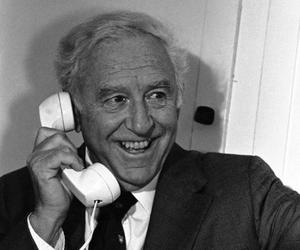
YEARS IN THE DEPARTMENT:
1950-1952
RESEARCH INTEREST:
Savings & Life-Cycle Hypothesis
BIOSKETCH:
Franco Modigliani was born on June 18, 1918 in Rome to a Jewish-Italian family, and enrolled at the Sapienza University of Rome at the age of 17 where he studied law. His interest in economics began in his second year at the University when he enrolled in a national competition in the field, which he subsequently won. However, there were very few opportunities in the country for him to explore his newfound interest due to the fascist government led by Benito Mussolini.
In 1938, Mussolini’s government enacted racial laws intended to allow discrimination against Italian Jews. Modigliani and his future wife, Serena, left Italy soon after and moved in with Serena’s family in Paris. After returning to Rome briefly in 1939 to receive his Doctor Juris degree, the couple applied for a visa to the United States, fearing that Europe was on the brink of war. They arrived in New York just a few days before Germany invaded Poland, beginning the Second World War.
Modigliani enrolled in the New School for Social Research when he arrived in the U.S., and received his degree in 1944. In 1950, he became a professor at the University of Illinois, where Modigliani and one of his graduate students, Richard Brumberg, constructed the initial theory of his famed “Life Cycle Hypothesis of Saving.” This attempted to explain how people plan their savings and consumption levels throughout their lifespan, and was developed from the idea that individuals base their consumption decisions on how much they plan to spend at each stage of their life.
Modigliani had joined the University of Illinois as part of a new group of Keynesian professors hired by Dean Howard Bowen; their appointments caused conflict with the more conservative existing faculty. This tension ultimately ended with Bowen’s removal as dean, which led many of his newly hired professors to leave Illinois. Modigliani himself left in 1952, a mere two years after arriving in Champaign-Urbana.
Modigliani then refined his Life Cycle Hypothesis during his tenure at Carnegie Mellon University, where he taught until 1962. He then moved to MIT, where he ran empirical tests on his hypothesis and ultimately published a groundbreaking paper on the subject. Modigliani won the Nobel Prize in 1985 for the Life Cycle Hypothesis and his contributions to the area of savings. Franco Modigliani continued teaching at MIT up until his death on September 25, 2003.
PHD:
The New School for Social Research, 1944
SELECTED PUBLICATIONS:
- Modigliani, Franco. The Life Cycle Hypothesis of Saving, the Demand for Wealth and the Supply of Capital. Social Research, vol. 33, no. 2, 1966, pp. 160–217. JSTOR.
- Modigliani, Franco, and Arun S. Muralidhar. Rethinking Pension Reform. Cambridge: Cambridge University Press, 2004. Internet resource.
- Fabozzi, Frank J, Franco Modigliani, and Michael G. Ferri. Foundations of Financial Markets and Institutions. Upper Saddle River, N.J: Prentice Hall, 1998. Print.
- Modigliani, Franco. The Debate Over Stabilization Policy. Cambridge [Cambridgeshire: Cambridge University Press, 1986. Print.
- Modigliani, Franco, and Tommaso Padoa-Schioppa. The Management of an Open Economy with "100% Plus" Wage Indexation. Princeton, N.J: International Finance Section, Dept. of Economics, Princeton University, 1978. Print.
OTHER LINKS/RESOURCES:
Franco Modigliani's Autobiography at the Nobel Prize Webpage
Franco Modigliani Papers at the Duke University Libraries
VITA:
Not available